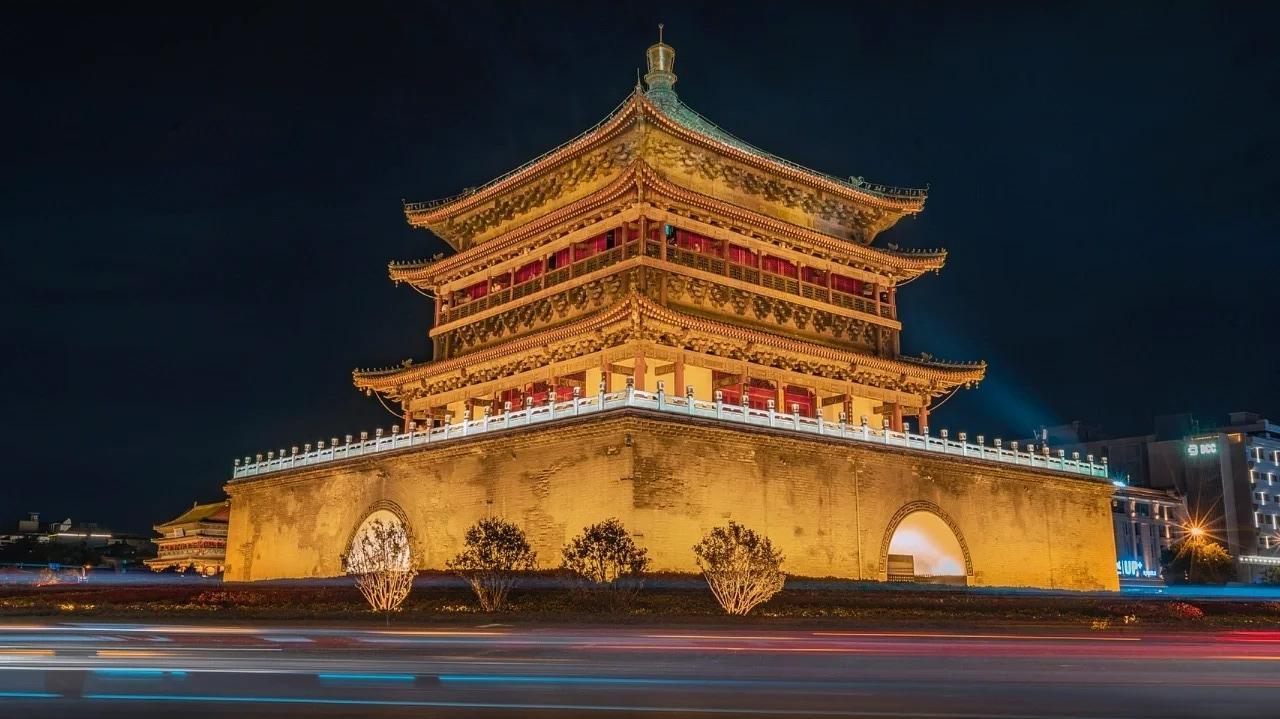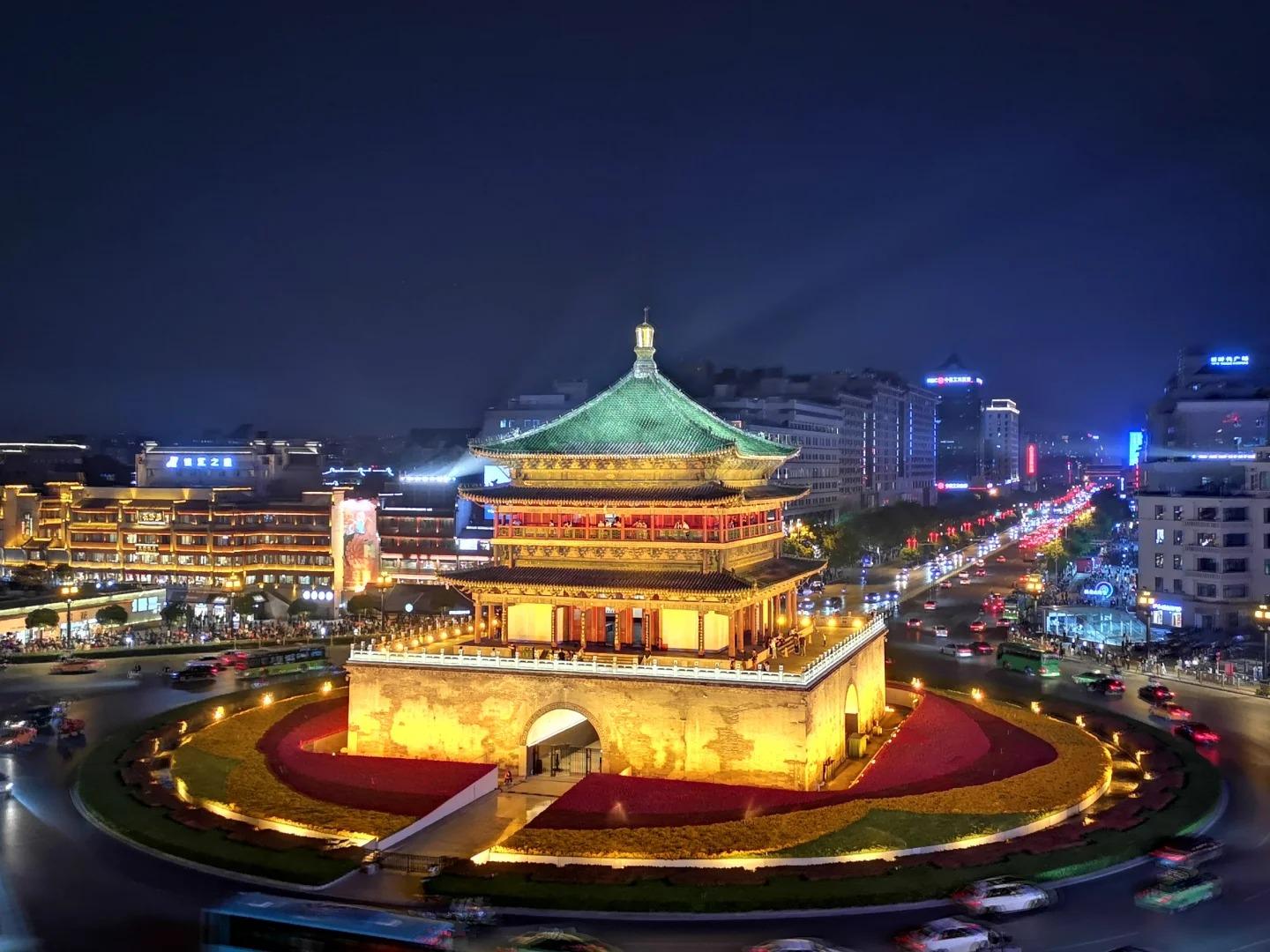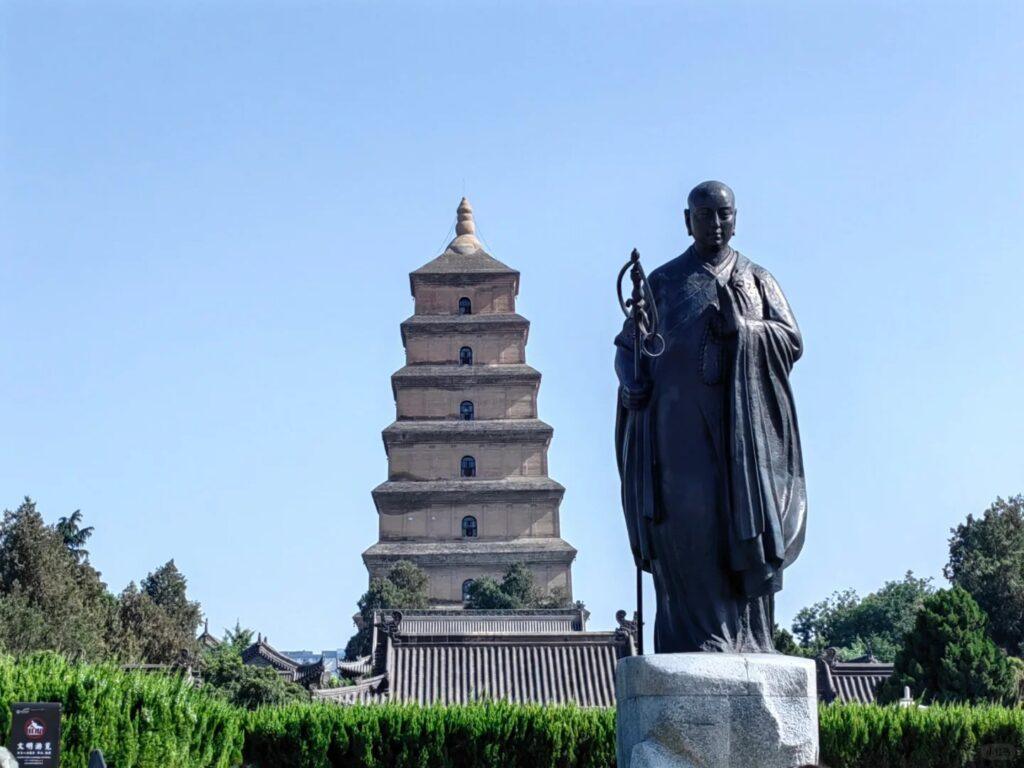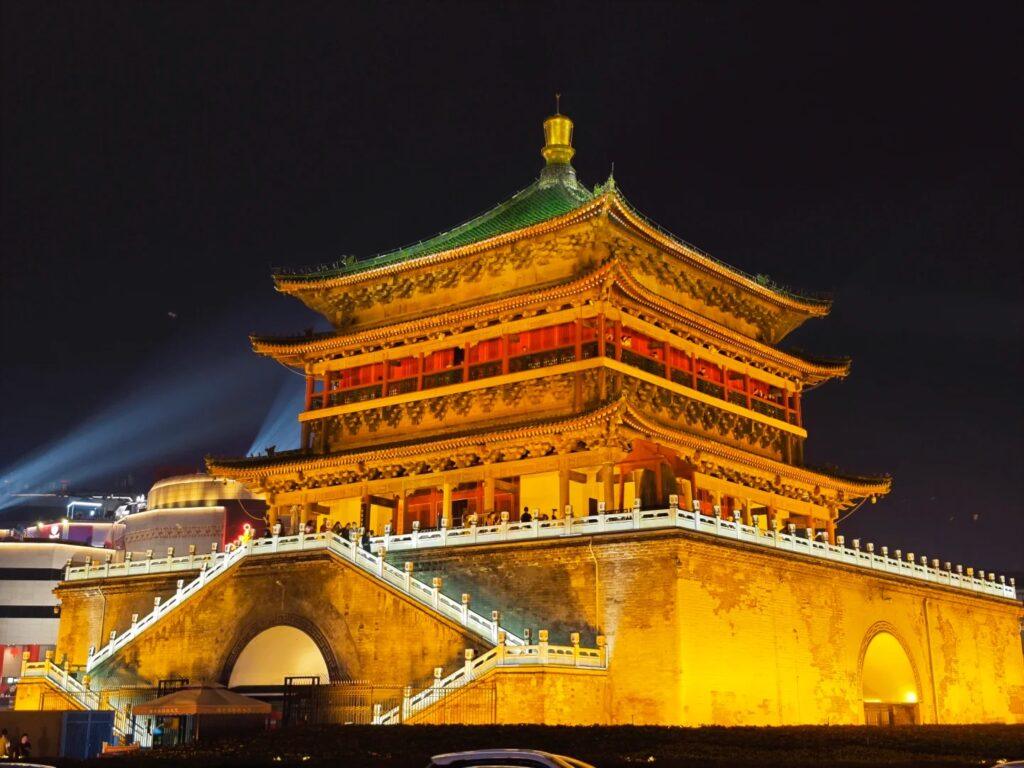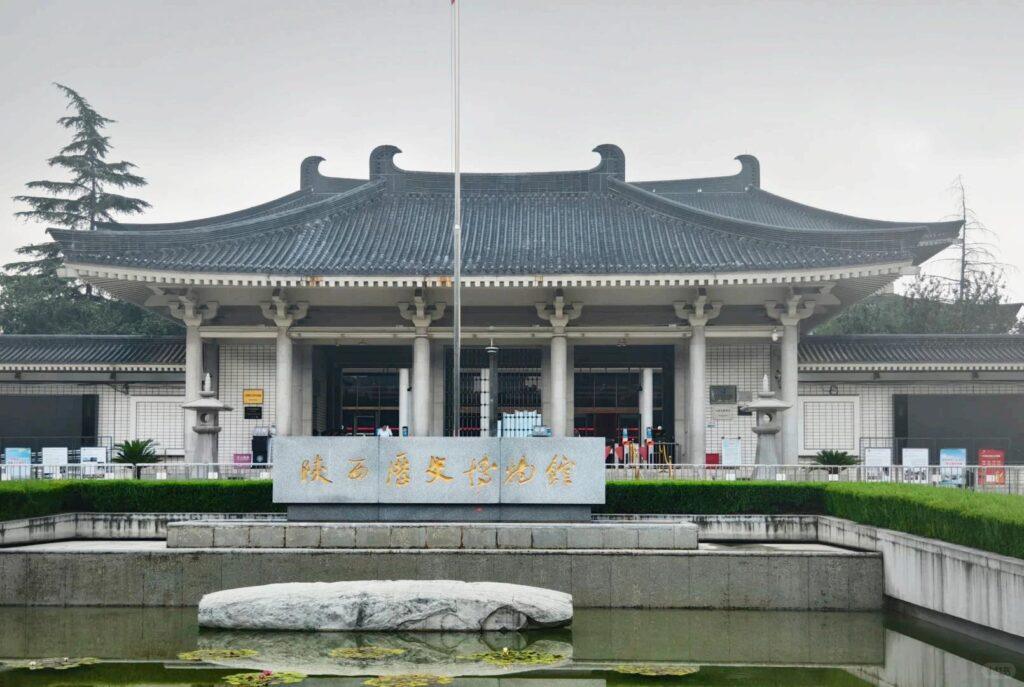Visiting Information
| Information | Details |
|---|---|
| Chinese Name | 钟楼 (Zhōnglóu) |
| Location and Address | West Street, Beilin District, Xi’an, Shaanxi Province, China |
| Opening Hours | 8:30 AM – 10:00 PM daily |
| Entrance Fee | 30 CNY for adults, 15 CNY for students |
| How to Get There | By Metro: Line 2, get off at Bell Tower station By Bus: Take bus 6, 8, 11, 12, 23, 201, 206, 215, 218, 221, 251, 300, 600, 604, 611, K630 to Bell Tower stop By Taxi: Easily accessible from anywhere in Xi’an city center |
| Best Time for Visit | March to May (spring) or September to November (autumn) |
| Contact Info | Tel: +86 29 8729 1778 Email: Not available |
Overview
The Bell Tower, located in the heart of Xi’an, is one of the city’s most iconic landmarks. Built during the Ming Dynasty in 1384, it stands at the intersection of four major roads in the central axis of the ancient capital. The tower is a symbol of Xi’an’s rich history and serves as a focal point for both locals and tourists. Its impressive architecture, cultural significance, and central location make it a must-visit attraction for anyone exploring Xi’an.
Historical Background
The Bell Tower was originally constructed in 1384 during the early Ming Dynasty under the reign of Emperor Zhu Yuanzhang. It was built to house a large bell that was rung at dawn to mark the beginning of each day. The tower’s location at the geographical center of the ancient capital of Chang’an (modern-day Xi’an) symbolized the balanced and harmonious rule of the Ming Dynasty. Over the centuries, the tower has undergone several renovations and restorations, with the most significant occurring in 1739 during the Qing Dynasty. Despite these renovations, the tower has maintained its original architectural style and cultural importance, serving as a testament to Xi’an’s long and illustrious history as the capital of 13 dynasties.

Architectural Features
- Structure and Design: The Bell Tower is a square brick and timber structure standing 36 meters high. It features multiple eaves with intricately carved beams and painted rafters, exemplifying traditional Chinese architecture. The tower is built on a brick base with wooden upper structures, creating a harmonious blend of strength and elegance.
- Roofing: The tower is crowned with a three-layered roof covered in green glazed tiles. Each corner of the roof is adorned with a mythical animal figurine, believed to ward off evil spirits and protect the structure. The golden-colored top of the roof adds a majestic touch to the overall appearance.
- Bell Chamber: The main chamber of the tower houses a massive bronze bell, cast during the Ming Dynasty. This bell, weighing about 6.5 tons, is intricately decorated with intricate patterns and Chinese characters. Although no longer in use for timekeeping, it remains a significant historical artifact.
- Exterior Decorations: The exterior of the Bell Tower is richly decorated with colorful paintings, intricate woodcarvings, and stone carvings. These decorations include traditional Chinese motifs such as dragons, phoenixes, and floral patterns, showcasing the exquisite craftsmanship of ancient Chinese artisans.
Cultural Importance
The Bell Tower holds immense cultural importance in Xi’an and China as a whole. It represents the zenith of Ming Dynasty architecture and serves as a symbol of Xi’an’s historical significance as the ancient capital. The tower embodies traditional Chinese concepts of cosmic harmony and balance, with its central location and symmetrical design. It has been a silent witness to centuries of Chinese history, from imperial rule to modern times, making it a tangible link to the past. The Bell Tower also plays a crucial role in local folklore and traditions, with many legends and stories associated with it. Today, it continues to be a cultural icon, featured prominently in Xi’an’s cityscape and playing a central role in local festivals and celebrations.
Surrounding Attractions
- Drum Tower: Located about 200 meters west of the Bell Tower, the Drum Tower was built in the same year (1380) and served as the time-keeping complement to the Bell Tower. It houses various drums and offers cultural performances, making it an excellent companion visit to the Bell Tower.
- Muslim Quarter: Just north of the Bell Tower, the Muslim Quarter is a vibrant area known for its rich Islamic culture and delicious street food. Visitors can explore narrow alleys filled with shops, mosques, and food stalls offering authentic local cuisine.
- Xi’an City Wall: The ancient city wall, one of the best-preserved in China, is a short walk from the Bell Tower. Visitors can walk or cycle along the top of the wall, enjoying panoramic views of the city and gaining insight into Xi’an’s historical defenses.
- Great Mosque: Located in the Muslim Quarter, the Great Mosque is one of the oldest and largest mosques in China. Its unique architecture blends traditional Chinese and Islamic styles, offering a fascinating glimpse into the cultural fusion that characterizes Xi’an.

Photography Opportunities
- Exterior Views: The Bell Tower’s majestic structure provides excellent opportunities for wide-angle shots, especially during golden hour when the setting sun bathes the tower in warm light. The contrast between the ancient tower and the modern city surrounding it creates striking compositions.
- Night Photography: After dark, the Bell Tower is beautifully illuminated, offering spectacular night photography opportunities. The glowing tower against the night sky, with the bustling city streets below, captures the essence of Xi’an’s blend of ancient and modern.
- Interior Details: Inside the tower, photographers can capture the intricate architectural details, including the wooden beams, painted ceilings, and the massive bronze bell. These close-up shots reveal the craftsmanship and artistry of ancient Chinese architecture.
- Panoramic City Views: From the upper levels of the tower, visitors can capture panoramic views of Xi’an. These shots can include the surrounding cityscape, the nearby Drum Tower, and the contrast between the ancient and modern aspects of the city.
Modern Importance
- Tourism Hub: The Bell Tower serves as a central tourist attraction in Xi’an, drawing millions of visitors annually. It plays a crucial role in the city’s tourism industry, contributing significantly to the local economy and providing employment opportunities in the tourism and service sectors.
- Cultural Education: As a well-preserved historical site, the Bell Tower acts as an outdoor museum, educating visitors about Chinese history, architecture, and cultural traditions. It provides a tangible link to the past, helping both locals and tourists understand and appreciate Xi’an’s rich heritage.
- Urban Landmark: The Bell Tower continues to serve as a major landmark and navigation point in modern Xi’an. Its central location makes it a popular meeting spot and a reference point for giving directions, integrating the historical structure into the fabric of daily urban life.
- Symbol of Xi’an: The Bell Tower has become an iconic symbol of Xi’an, featured prominently in city promotions, postcards, and souvenirs. Its image represents not only the city’s historical importance but also its identity as a modern cultural and tourist destination, bridging the gap between Xi’an’s ancient past and its vibrant present.

FAQ
- What is The Bell Tower famous for?
The Bell Tower is famous for its impressive Ming Dynasty architecture, central location in Xi’an, and historical significance as a timekeeping structure. It’s an iconic symbol of the city and its ancient heritage. - What’s inside The Bell Tower?
Inside The Bell Tower, visitors can see the ancient bronze bell, explore multiple levels of the structure, view exhibits on the tower’s history, and enjoy panoramic views of Xi’an from the upper floors. - Is The Bell Tower free?
No, The Bell Tower is not free. There is an entrance fee of 30 CNY for adults and 15 CNY for students. - Is The Bell Tower worth visiting?
Yes, The Bell Tower is worth visiting for its historical significance, architectural beauty, and the panoramic views it offers of Xi’an. It’s a key landmark that helps visitors understand the city’s rich history. - What to do in The Bell Tower?
In The Bell Tower, you can climb to different levels to admire the architecture, see the ancient bell, learn about Xi’an’s history through exhibits, take photographs, and enjoy panoramic views of the city from the upper floors. - How do I get to The Bell Tower in the local city?
In Xi’an, you can reach The Bell Tower by taking Metro Line 2 to Bell Tower station, or by bus (routes 6, 8, 11, 12, 23, 201, 206, 215, 218, 221, 251, 300, 600, 604, 611, K630) to the Bell Tower stop. It’s also easily accessible by taxi from anywhere in the city center. - How to visit The Bell Tower?
To visit The Bell Tower, go during opening hours (8:30 AM – 10:00 PM), purchase a ticket at the entrance, and allow about 1-2 hours for your visit. Climb to different levels, read the historical information provided, and don’t miss the opportunity to view the city from the upper floors. Consider visiting in the late afternoon to see both daytime views and the tower illuminated at night.


